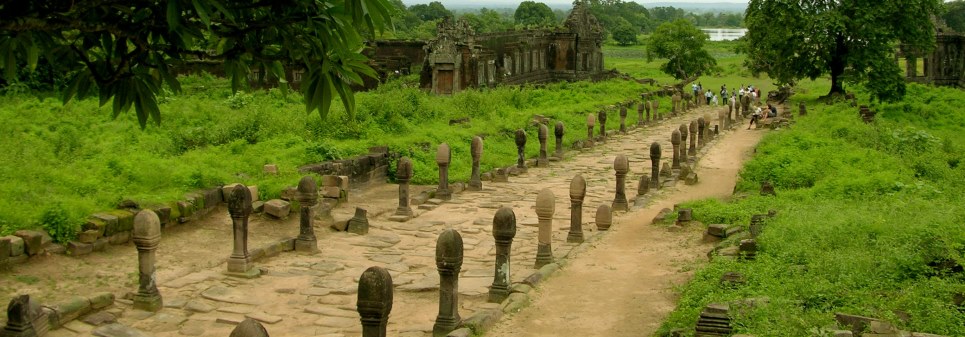Pakse, or “Mouth of River Se”, is one of the most fascinating cities in Laos. Located on the confluence of the Xe Don and Mekong Rivers, it makes the third populous city in “country of Lan Xang”. Pakse is an ideal base with its relaxing atmosphere, friendly locals, ubiquitous riverside restaurants and bars, and numerous massage clinics. Visit Pakse, you have a chance to see one of the largest waterfall in South East Asia, known as Niagara of the East: Khon Phapheng, the complex Si Phan Don (4000 islands), Wat Phou sites and amazing Boloven Plateu…
Location
Pakse locates on Champasak Province, on the south of Laos.
Quick facts
Population: 88,000
Dial code: +856 – 31
History
This city was founded by the French as an administrative outpost in 1905, and was formerly the capital of the Lao Kingdom of Champasak until 1946. During the Franco-Thai war the French ceded Pakse to Thailand. The city served as the primary seat and residence to Prince Boun Oum Na Champassak, an important figure in the Laotian Civil War. Since 1975, Pakse has become an economic power and of regional importance within the region.

Climate
Pakse has a tropical savanna climate (Köppen climate classification Aw) with very warm temperatures throughout the year. Temperatures are especially high in the months before the monsoon season (March-April). There is a distinct wet season (April-October) and dry season (November-March)
Best time to go
Best time to visit Pakse is between November and April.
Banks
Join Development Bank (JDB) http://www.jdbbank.com/
BCEL bank http://www.bcel.com.la/la
Featured Products
Culture & Heritage Tours
Visit the ruins of Wat Phou and Khong Island by boat. Or spend your day explore amazing Khon Pha Pheng Waterfall, wait for freshwater Irrawaddy Dolphins or take a bus to Boloven Plateau, where has another famoust fall: Tadla.

Cruise Tours
An magnificent Cruise Wat Phou will take you 3 days 2 nights upstream or downstream from Champasak to Khong Island, explore the beautiful landscape of Si Phan Don and local village. Enjoy buffet on sun desk and sunset view on the Mekong River, wait for freshwater Irrawaddy Dolphins perform their magic dance.
Main sight-seeings in Pakse
Khon Phapheng Waterfall
The Khone Falls are the largest in southeast Asia and they are the main reason that the Mekong is not fully navigable into China.
The highest falls reach to 21 metres (69 ft); the succession of rapids stretch 9.7 km (6.0 mi) of the river’s length. The average discharge of the cataract is nearly 11,000 m3/s (390,000 cu ft/s), though the highest volume on record was reached at over 49,000 m3/s (1,700,000 cu ft/s).
Wat Phou
The fascinating pre-angkorian ruins of Wat Phu is one of Southeast Asia’s most dramatically situated temples. These intriguing Khmer ruins are perched at the base of Mount Phu Kao. Wat Phu is one of the Lao World Heritage sites recognized by UNESCO in 2001, this wonderful archeological site of Khmer civilization dates back to the 5th century, predating the famous Angkor Wat in Cambodia.
Boloven Plateau
The Boloven Plateau is known for its cooler temperature being located high above the Mekong Valley. Rivers run off this high plateau in all directions and then plunge out to lush forests along in a series of spectacular surging waterfalls. A trip to the plateau provides a refreshing break from the heat and allows you to observe the cultivation of rich coffee, tea, cardamom, bananas, and other crops that can be seen en route








